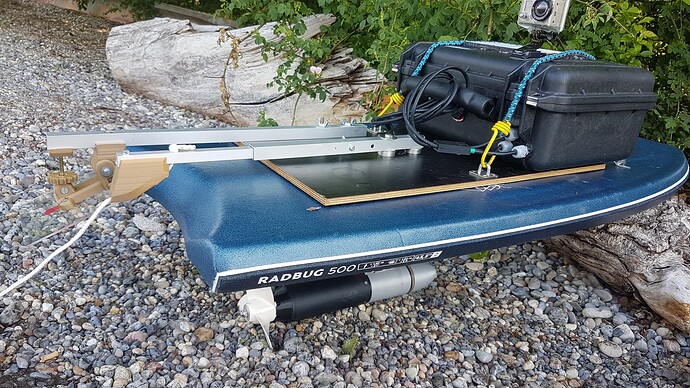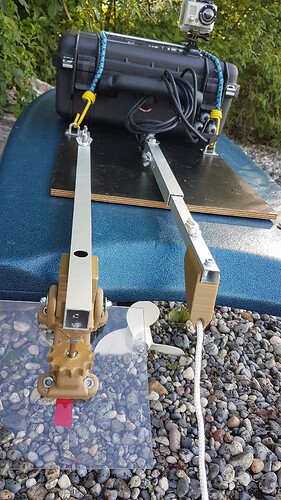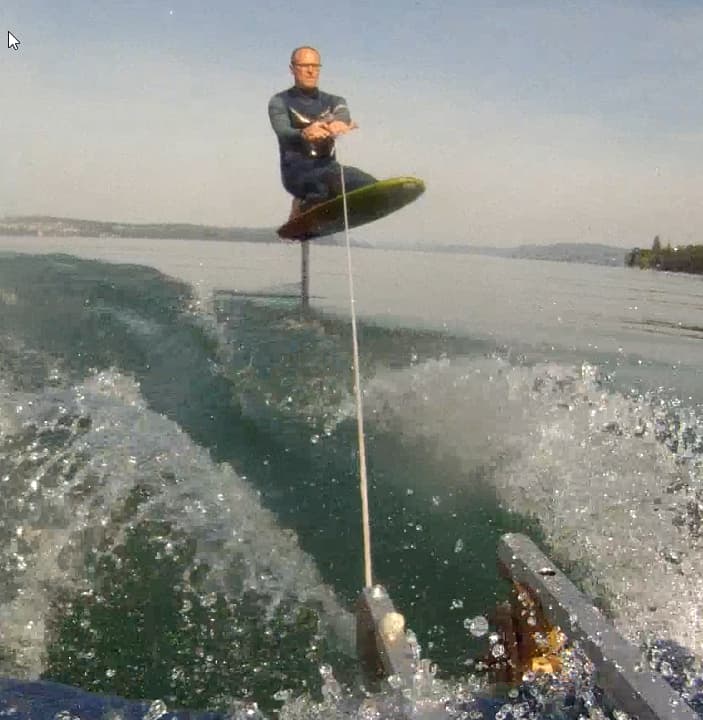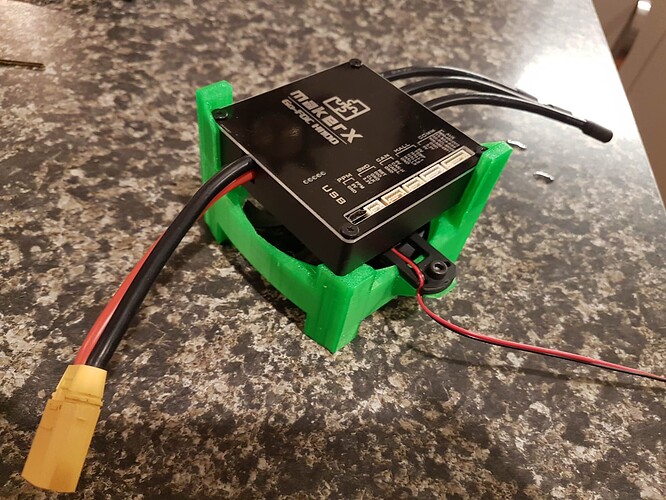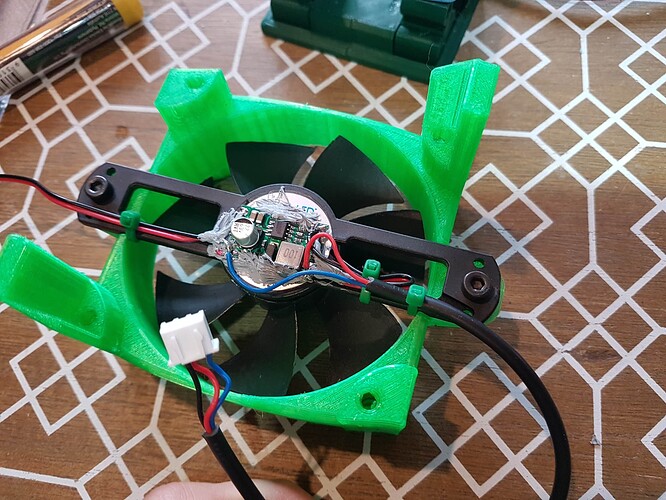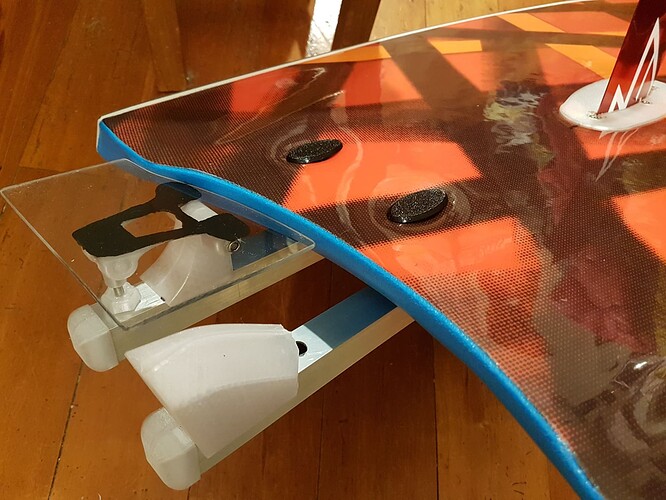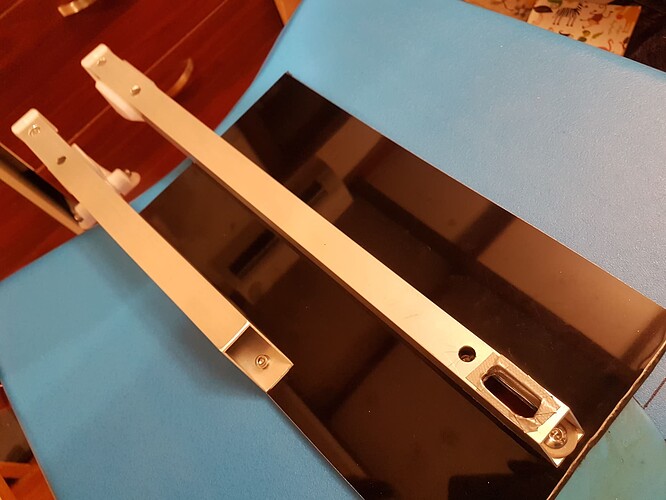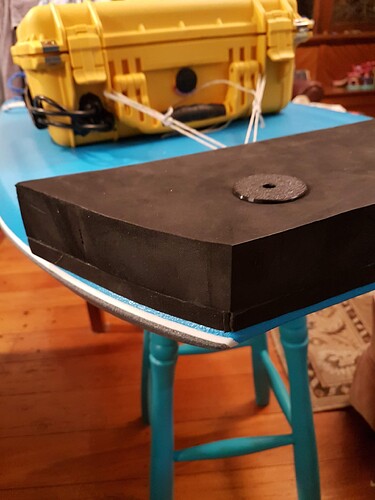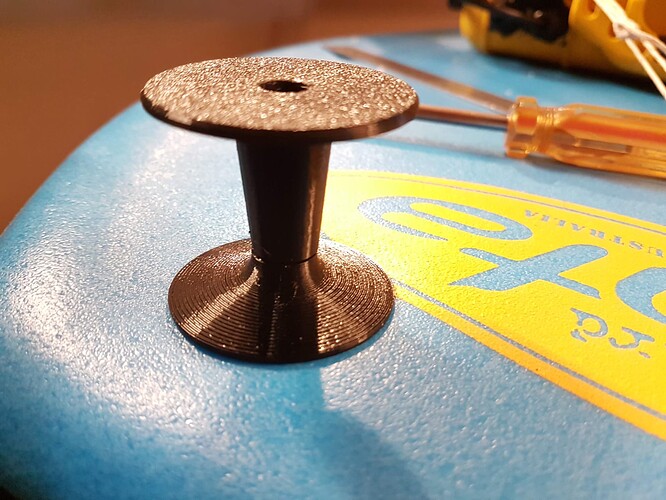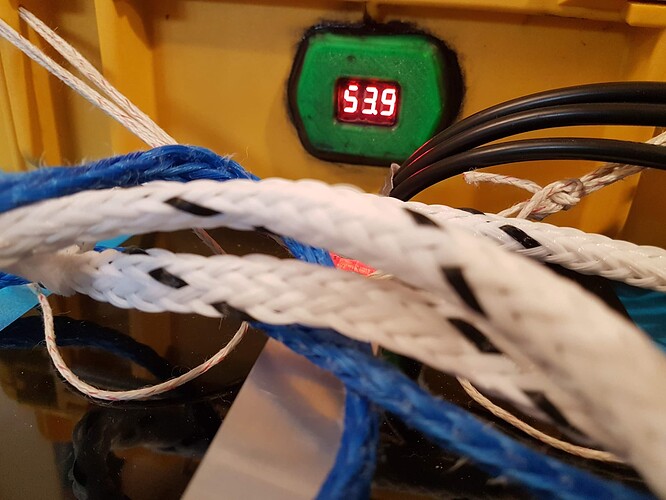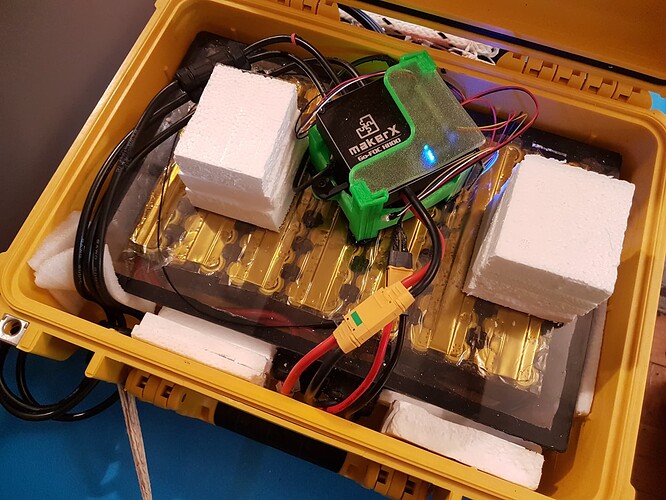Do you have any issues with reception with the antenna back that far?
Yes, between that and the carbon fiber and low volume board. I ran an sma extension out towards the front of the board
I updated my tow point to be lower, and it sits much flatter when I water start - much less of a problem with the board twisting over to the right due to torque (particularly with the 39" junior sized boogie board I’m still using). When you water start with the tow boogie it lifts the nose, and tries to flip over to the right side as a result. I had been wanting to make this change for ages, but have been busy with life, and I see recently that Valhalla had done something similar with success. This one doesn’t add any drag, but drops the tow point 50mm. With this change, I can ride with much less trim tab angle because the tail of the board gets pulled up and the front helps keep it flat, for less drag and easier starts. The board tracks much better at speed with less trim tab.
I use a 1" square alu tube for my tow point, attached directly to the top of the Axis mast bolts (with a cutout for the wires).
The tow rope goes vertical through two holes in the aluminium box tubing just in front of this printed tow point, and is secured with a big knot on top of the alu tube. This way the forces are carried by the alu tube, directly to the mast, and the 3d printed tow point is under compression upwards.
I use these to secure the alu box tube onto the back of the board (otherwise it tries to pull up off the board):
I have also updated from the maytech remote to an erayfoil. Remote reliability in salt water has been my biggest issue, I had a few swims back in after the maytech gradually died and I kept repairing it. The erayfoil seems ok so far. The safety lock when you go underwater is actually a useful feature, and it only locks when you properly go under water. I don’t fully trust the waterproofing, so still keeping it in a pu waterproof cover.
Planning my next build at the moment, with a 104 cell 40T3 13s8p battery. Hoping to reduce weight in a few places so it isn’t too heavy.
Hello Jatem,
Just burned out my Trampaboards 75/300. Miss the tow boogie already. Such fun when the surf and wind aren’t cooperating. I looked for the Maker x Vesc you used. I don’t see it on there Website. Will the Maker x HI200 work too? I’m using the two brick Lipos theat Valhalla used in his builds.
Thanks!
The Maker x HI200 will work well.
Hi Jatem,
got my tow boogie ready and had my first two sessions on the lake. Works great and is a lot of fun.
Would like to say thanks to you and Valhalla as my project is based on your work. Thanks a lot.
I use a RadBug 500 43,5" body board from Decathlon, Two 6s 20Ah LiPo from Hobbyking, a MakerX Hi200 VESC and the Flispky 65161 100KV Motor with the Flipsky 184mm propeller and a FeRo remote.
I used your 3D files to print the motor mount (22cm Axis mast) and the attachment of the mast to the board.
For myself (80kg) I use my kite foil volumeboard with approx 30l and a RL Orca wing with 1250 cm^2.
There a sure some improvements necessary as I need about 2,5-3 kW to start and still approx 2kW when on the foil (approx 20 km/h).
I didn’t succed to get up and stand on the board, I sure need to practice.
Great work on your tow build. The high power consumption is likely a combination of the oversized flipsky propellor and your foil wing. I’ve seen others report that the flipsky propellor isn’t a great match for our purposes. The manta foils propellor, flite or flying rodeo props should use lower current. A higher aspect or bigger foil will also get on the foil with less power required, and cruise at a lower speed. I’m using a 5’ 38L prone foil board, and I’m not surprised it’s difficult getting to your feet with a smaller kite foil board. Well done getting up foiling on your knees.
I tested a FR 2 blade propellor, and was impressed with the value for money and finishing quality. The gold anodised finish looks amazing. The FR 2 blade used 1000-1200w at cruising speed, compared to 850-1000w with the Manta propellor. That’s with an Axis 999 foil that needs a bit of speed (17-18 km/hr) to keep foiling. The other major difference is the Manta 3 blade having much more push during waterstarts. So, the Manta prop is staying on my tow boogie for now.
My latest battery build is a 13s8p Samsung 40T3 pack. This is a heavier pack due to 1/3 more cells, but it gives me 32Ah or 1600whr of capacity, which is really good for a long surf session. I love having the extra runtime, makes it so much better. I can spend 2 hours catching swell with this new pack. I was always running out of juice and wanting more waves with the 13s6p pack (although it’s still running strong, and gives well over an hour of cruising). Due to the extra weight, I’ve made some weight savings, thinned down to 3mm polycarbonate on the battery housing, smaller 30A BMS for charge only which doesn’t have bluetooth, smaller MIDI 150A main output fuse. This new 1600wh pack is 7.7kg with polycarb case, which is 1.5kg heavier than the 6p eariler version. The polycarb case is plenty watertight…
I also thought I’d try a smaller VESC and not put it in a waterproof alu enclosure to save weight, as I have had no water leakage so far in my Pelican 1450 after far more than 100 sessions. This meant I could try fan cooling, and I designed a shroud to go under the Maker HI100 with a 90mm graphics card fan. I used a 55v to 9v step down to run the fan. I’ll be mounting a 100v miniature voltmeter on the pelican case, so that I can see the exact battery voltage while I’m towing - the 5 bar display on the erayfoil is too crude to be very useful. The voltmeter and graphics card will be powered from the xt60 plug used for charging, so that it will shut down the V display and fan if the battery goes into protection mode as a safety backup, and it won’t drain the battery too far if I forget to unplug it.
The HI100 with a fan is running the mosfets at 30-40 degrees while ~1kW cruising in 15 degrees C ambient, and gets up to 65 degrees C for a brief period when I am using 3kW for 20 seconds during a prolonged waterstart/tow out of a shallow wave section. The temperature drops back to 40 degrees within a minute of cruising. Seems like a pretty good solution, if you’re not too amp hungry.
With the previous alu enclosure over the bigger Maker-X HI200, the temps would creep consistently up to about 75 degrees C after a session, in 25 deg C ambient. This fan version on a much smaller VESC brings the temperature back down quickly between bursts, with likely a similar temp peak during prolonged high power bursts. For a tow boogie where you’re mostly cruising and saving power for a longer wave session, with short waterstarts, the fan seems a good option. This vesc setup saves about 700g over the previous hi200 in the alu box, so my total weight gain was about 1kg for heaps more run time.
The latest build on a 44" boogie board with the low tow point is giving much better waterstarts, with a much lower chance of flipping it over sideways. The rear printed bolt down points (black oval printed parts on the bottom rear of the board) make a huge difference to the durability of the alu tube mounting, taking all the upwards and turning stress into the board.
Big washers are a good idea on the main alu box tube tow bar mount to the mast, to reduce stress on the aluminium.
So cool to see the latest progression on tow boogies. Maybe some day I’ll share my latest iterations. Now if someone can make a two channel water resistant controller…
Having a recall function on the boogie isn’t as important to me these days, as my pumping skills continue to gradually improve. It gives me a good workout pumping back over to it, and I just lean down to scoop up the line/handle and foil straight out to another line of swell.
More so for steering out to shoulders of waves after launching in. The return function doesn’t interest me as much as being able to control to a certain position.
Thanks for your help Jatem!
I finally got everything ready to test today when I tripped over the USB connector cord and orderly much ripped out the USB port! Do you recommend that I try the Bluetooth module you got from Maker X to program the VESC or did I just ruin another VESC (fried my Trampa 75/300).
The bluetooth module works great with vesc tool on my android phone, and also allows data logging. It’s the only way I program my vescs these days. Hopefully you’ve only damaged the usb, and a bluetooth module will work around that. I would try one, if I was you.
Well I almost had it! I rigged up the Bluetooth module and set all parameters. When I went back later to try and smooth out the throttle curve the mobile app gave me this :
Am I locked out? I dot seem to be able to find any info on what the UUID of my VESC is. So close!
Thanks so much for your help!
Why not connect with a USB cable as the popup suggests?
It looks like your uuid is just above the word “manually” in the screenshot. See if you can add it to the app manually? Have a look in the Pair BLE section, lower down on the first page of the vesc tool app. Inside there you can add vesc via bluetooth manually.
Tripped over the usb cord and ripped off the nub on the VESC. talk about feeling dumb
No luck using that number. It says it needs to be 24 characters.
Tried to use strings of numbers given in the Bluetooth properties for the device on my pc. No luck.
Would CAN cables be an option?
Hi, I did the same to my Maker-X VESC: mechanicaly destroyed the USB-port. One option to program the VESC ist to use a second VESC and connect the VESCs by CAN. Works for me.
I’m loving the bigger capacity 13s8p battery pack, with Samsung 40T3 cells. I’m getting much longer sessions, around 20km from a pack, 2 hours of surfing. It doesn’t sag as much when you get to 45V the way a 13s6p pack does. I travel ~1.5km out to the waves from my launch location, so it’s good to have a reasonable buffer at the end of a session.
I added 40mm closed cell foam for nose buoyancy, which does a reasonable job at preventing nose dives, but really short period troughs can still cause it to dive when going with in the same direction as the chop.
Printed clamps hold the foam securely, much better than gluing to the PE board surface which is like teflon for glues. It’s probably hard to see, but the lower two parts are angled to match the nose of the board.
I added a 100V voltmeter display, and it’s so much better than using the 5 bars on the remote for battery voltage. Now I know the actual battery voltage on the water. The voltmeter requires a low voltage supply (in addition to the battery voltage and ground), which comes from the 55v to 12v buck converter (also used by the fan). There’s a 3mm acrylic window inside the green printed panel, providing a couple of layers of waterpoofing with ISR 70-03 glue.
The maker x hi100 vesc gets up to 75-80 deg C (in 10 deg C ambient) under prolonged 3kw output, with the fan running slowly at 9V. It cools back down to 40 deg within a minute of cruising, so it’s working fine. I’ll update the fan’s buck supply to run at 12V before summer, so it will stay a bit cooler. I sprayed some corrosionx into the hi100 to reduce the likelihood of saltwater damage. The Pelican seals have been reliably at keeping it all dry.
The external voltage display provides an extra safety feature by running through the BMS - I connected the buck converter via the XT60 charging plug. The battery is only running a 30A BMS on the charge port, with the discharge leads bypass the BMS via a 150A midi fuse to the XT90. If the BMS detects a battery fault the voltmeter will shut off and let me know the battery is not happy.
I was disappointed by how heavy the HO ski handle was that I purchased, around 350g, it was sinking and really difficult to grab underwater while pumping back to a moving tow boogie. So I built a one handed 16cm handle from a carbon tube, filled with foam, and a couple of printed end caps. The new handle is 60g and floats well. I also threaded some compressible 10mm PE foam rod inside my tow line so it also floats better now.

